William A. Shear | |
|---|---|
| Born | 1942 (age 80–81) |
| Nationality | American |
| Alma mater | Harvard University (Ph.D) University of New Mexico (M.S.) |
| Known for | Millipede taxonomy |
| Scientific career | |
| Fields | Diplopodology |
| Institutions | Hampden-Sydney College |
| Doctoral advisor | Herbert Levi |
William Albert Shear (born 1942) is Trinkle Professor Emeritus at Hampden-Sydney College, Virginia. He is a spider and myriapod expert who has published more than 200 scientific articles primarily on harvestman and millipede taxonomy.
He was born in Coudersport, Pennsylvania, completed his undergraduate work at College of Wooster, masters at the University of New Mexico, and PhD at the Museum of Comparative Zoology at Harvard University under the supervision of Herbert Walter Levi.
While at Harvard, Shear completed a revision of the millipede family Cleidogonidae and reclassification of the order Chordeumatida. [1] He is an expert in Paleozoic arthropods, and has published several papers on fossil millipedes, [2] centipedes, and spiders. A number of species are named after him, including Hypochilus sheari Platnick, 1987 and Brachoria sheari Marek, 2010.
Shear is a lifetime appointee as Senior Scientific Associate at the Virginia Museum of Natural History and is a research associate at the American Museum of Natural History and Museum of Comparative Zoology.
He lives in Farmville, Virginia, and is an avid iris gardener and Godan (fifth degree black belt) in Shōrin-ryū Shōrinkan traditional Okinawan karate.
His zoological author abbreviation is Shear. [3]

Alexander Emmanuel Rodolphe Agassiz, son of Louis Agassiz and stepson of Elizabeth Cabot Agassiz, was an American scientist and engineer.
In biology, taxonomy is the scientific study of naming, defining (circumscribing) and classifying groups of biological organisms based on shared characteristics. Organisms are grouped into taxa and these groups are given a taxonomic rank; groups of a given rank can be aggregated to form a more inclusive group of higher rank, thus creating a taxonomic hierarchy. The principal ranks in modern use are domain, kingdom, phylum, class, order, family, genus, and species. The Swedish botanist Carl Linnaeus is regarded as the founder of the current system of taxonomy, as he developed a ranked system known as Linnaean taxonomy for categorizing organisms and binomial nomenclature for naming organisms.
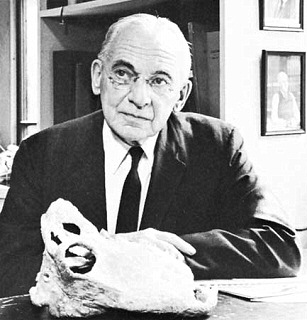
Alfred Sherwood Romer was an American paleontologist and biologist and a specialist in vertebrate evolution.
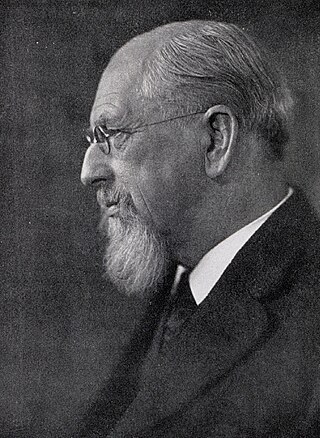
William Healey Dall was an American naturalist, a prominent malacologist, and one of the earliest scientific explorers of interior Alaska. He described many mollusks of the Pacific Northwest of North America, and was for many years America's preeminent authority on living and fossil mollusks.

Ruth Dixon Turner was a pioneering U.S. marine biologist and malacologist. She was the world's expert on Teredinidae or shipworms, a taxonomic family of wood-boring bivalve mollusks which severely damage wooden marine installations.

Thomas Barbour was an American herpetologist. He was the first president of the Dexter School in 1926. From 1927 until 1946, he was director of the Harvard Museum of Comparative Zoology (MCZ) founded in 1859 by Louis Agassiz at Harvard University in Cambridge, Massachusetts.
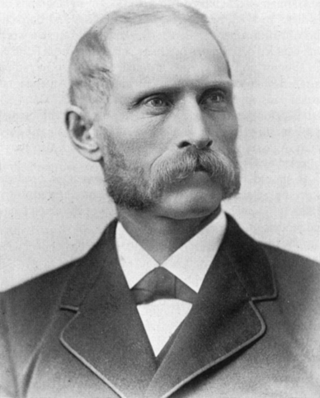
Samuel Walton Garman, or "Garmann" as he sometimes styled himself, was an American naturalist and zoologist. He became noted as an ichthyologist and herpetologist.
Frank Morton Carpenter was an American entomologist and paleontologist. He received his PhD from Harvard University, and was curator of fossil insects at the Harvard Museum of Comparative Zoology for 60 years. He studied the Permian fossil insects of Elmo, Kansas, and compared the North American fossil insect fauna with Paleozoic taxa known from elsewhere in the world. A careful and methodical worker, he used venation and mouthparts to determine the relationships of fossil taxa, and was author of the Treatise volume on Insects. He reduced the number of extinct insect orders then described from about fifty to nine.

Ralph Vary Chamberlin was an American biologist, ethnographer, and historian from Salt Lake City, Utah. He was a faculty member of the University of Utah for over 25 years, where he helped establish the School of Medicine and served as its first dean, and later became head of the zoology department. He also taught at Brigham Young University and the University of Pennsylvania, and worked for over a decade at the Museum of Comparative Zoology at Harvard University, where he described species from around the world.

Carl Henry Eigenmann was a German-American ichthyologist of the late nineteenth and early twentieth centuries, who, along with his wife Rosa Smith Eigenmann, and his zoology students is credited with identifying and describing for the first time 195 genera containing nearly 600 species of fishes of North America and South America. Especially notable among his published papers are his studies of the freshwater fishes of South America, the evolution and systematics of South American fishes, and for his analysis of degenerative evolution based on his studies of blind cave fishes found in parts of North America and in Cuba. His most notable works are The American Characidae (1917–1929) and A revision of the South American Nematognathi or cat-fishes (1890), in addition to numerous published papers such as "Cave Vertebrates of North America, a study of degenerative evolution" (1909) and "The fresh-water fishes of Patagonia and an examination of the Archiplata-Archelenis theory" (1909).

Norman Ira Platnick was an American biological systematist and arachnologist. At the time of his death, he was a professor emeritus of the Richard Gilder Graduate School and Peter J. Solomon Family Curator Emeritus of the invertebrate zoology department of the American Museum of Natural History. A 1973 Ph.D. recipient at Harvard University, Platnick described over 1,800 species of spiders from around the world, making him the second most prolific spider taxonomist in history, behind only Eugène Simon. Until 2014 he was also the maintainer of the World Spider Catalog, a website formerly hosted by the AMNH which tracks the arachnology literature, and attempts to maintain a comprehensive list, sorted taxonomically, of every species of spider which has been formally described. In 2007 he received the International Society of Arachnology's Bonnet award, named for Pierre Bonnet, in recognition of his work on the catalog.

Trichopetalum whitei, common name Luray Caverns blind cave millipede, is a rare troglobitic millipede of the upper Potomac River drainage in four Virginia counties and three West Virginia counties. It has been recorded from 12 caves across this range, including the Luray Caverns where it was first discovered and described.
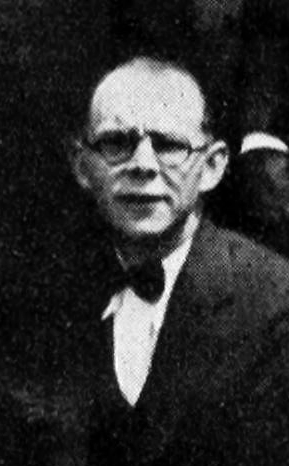
William James Clench was an American malacologist, professor at Harvard University and curator of the mollusk collection in the malacology department of the Museum of Comparative Zoology at Harvard.
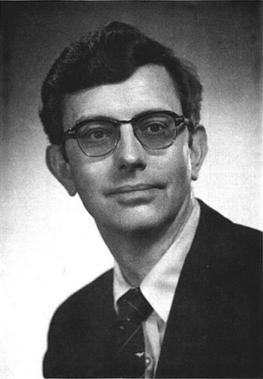
William Tinsley Keeton was an American zoologist known internationally for his work on animal behavior, especially bird migration, and for his work on millipede taxonomy. He was a well-liked professor of biology at Cornell University in Ithaca, New York and author of a widely used introductory textbook, Biological Science.
Short-range endemic (SRE) invertebrates are animals that display restricted geographic distributions, nominally less than 10,000 km2, that may also be disjunct and highly localised. The most appropriate analogy is that of an island, where the movement of fauna is restricted by the surrounding marine waters, therefore isolating the fauna from other terrestrial populations. Isolating mechanisms and features such as roads, urban infrastructure, large creek lines and ridges can act to prevent the dispersal and gene flow of the less mobile invertebrate species. Subterranean fauna, which include stygofauna and troglofauna, typically comprise short-range endemics.
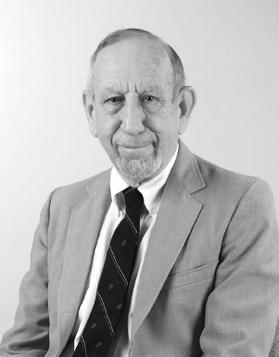
Richard Lawrence Hoffman was an American zoologist known as an international expert on millipedes, and a leading authority on the natural history of Virginia and the Appalachian Mountains. He was a biology professor at Virginia's Radford College for almost thirty years, and curator of invertebrates at the Virginia Museum of Natural History for another twenty years. He co-founded the Virginia Natural History Society, described over 400 species of millipedes, and produced more than 480 scientific publications. He is commemorated in the scientific and/or common names of over 30 animal species, including the valley and ridge salamander and Hoffman's dwarf centipede.

Harold Frederick Loomis was an American botanist and myriapodologist known for his contributions to agronomy, plant pathology, and millipede taxonomy. He worked for the U.S. Department of Agriculture for over four decades, studying diseases of crop plants, and was a colleague of Orator F. Cook. He also made major contributions to the natural history of Central America and the West Indies, naming over 500 species of millipedes in total. He co-described with Cook the leggiest animal on earth: Illacme plenipes, with over 700 legs.
Otto Kraus was a German arachnologist and myriapodologist. He was director of the Zoological Institute and Zoological Museum at the University of Hamburg from 1969 to 1995, where he also served as professor. He was a commissioner (1963–1995) and president (1989–1995) of the International Commission on Zoological Nomenclature (ICZN). He published nearly 200 scientific papers and described nearly 500 species of myriapods and over 80 species of spiders. His works include contributions to the encyclopedia Grzimeks Tierleben and the German translation of Ernst Mayr's Principles of Systematic Zoology.

Edward Laurens Mark was an American zoologist, Hersey Professor of Anatomy and Director of the Zoological Laboratory of the Museum of Comparative Zoology (MCZ) at Harvard University. In his landmark cytological monograph published in 1881, Mark also conceived the parenthetical referencing for citation, also known as Harvard referencing.
Eiectus is a potentially valid genus of extinct short-necked pliosaur that lived in the Early Cretaceous period. Fossil material has been recovered from the Wallumbilla Formation (Aptian) of Queensland was initially classified under the related genus Kronosaurus until 2021.